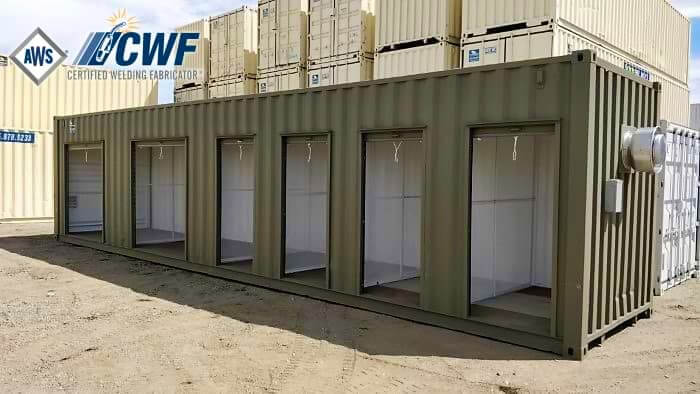Storage container units are shipping containers modified for use as a storage rental unit. You can purchase the shipping containers new or used and modify it. Option 2 is to purchase a kit from a factory that constructs the kit using shipping container type construction.
The first option costs less up front, but sweat equity and trial and error equity are required to finish the project. The second option costs more up front, but assembly is quick and easy, the finished product has a clean, professional presentation with all the detailed construction you will want in a storage unit, and you can rent the units quicker.
If you can acquire the funds to purchase the kits, then that is the best way to go. If you can’t or acquiring the funds would delay your project for more than two years, then put in the sweat equity to modify used containers and start your business now. Of course, building in phases is always an option.
There are several storage container manufacturers. United Storage Containers (USC) is best in class, and the one I recommend for best reliability and value. There is a clip below highlighting the benefits of USC storage containers.
Under which conditions is it best to use storage containers? First you need to consider the pros and cons of container vs. traditional construction.
Traditional Construction Advantages:
- The finished product can look better
- You can build multiple levels
- You can install climate control
- It’s easy to build different Height walls
- It’s easy to install decorative facia
- Able to comply with any municipality demand
Traditional Construction Setbacks:
- Takes a large initial investment
- Plans not flexible
- Increases impact fees
- Increases property taxes
- Requires permitting/inspections
- Takes longer to construct
Storage Container Advantages:
- It’s considered personal property
- No impact fees, no increase to property taxes
- No permitting or inspections in most municipalities
- Can place in locations buildings can’t be constructed
- Easy to self-fund expansion of your facility
- Good to use in corners of RV lots.
- Can build on property you couldn’t otherwise
- -such as on top of a landfill, resulting in lower
- Entry cost.
- Stands up to all weather
- Similar net cash flow with lower entry cost
- Doesn’t commit you to a property use
Storage Container Setbacks:
- Can’t reasonably add climate control
- Finished product is less appealing
- Restricted to certain wall heights
- Can’t build vertically
- Product has a discounted look and customers expect a discounted price
- Lower valuation upon sale
The primary advantages of storage containers is the ability to build without specialized labor/contractors, place them where you wouldn’t otherwise be able to build, and the low entry cost. Below I inserted a video showing exactly what it looks like to assemble one storage container unit.
In general, use traditional construction when:
- You can afford the entry cost
- You’re committed to this use of the property
- Your net income is maximized using this type of construction
- You plan to build vertically
- You plan to install climate control.
Use storage container units when:
- Property conditions doesn’t allow traditional construction
- Setbacks or odd property shapes doesn’t allow you to maximize potential
- You self-fund expansion and don’t wish to
- Corners in RV lots
- The impact fees and increased property taxes negate the economic advantages of traditional construction
- Climate control is unimportant
- You want to build inside a utility easement.
- You want cashflow for your property now without committing to this use long-term.

